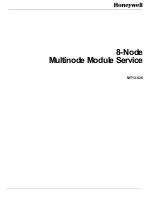
User Guide for FibeAir® IP-20 All-Outdoor Products, CeraOS 10.5
Page 134 of 825
Ceragon Proprietary and Confidential
In configurations that use a third-party radio as the slave unit, the following must
be configured on the slave unit:
•
The unit’s switching mechanism must be set to Pipe mode
•
Automatic State Propagation must be enabled
•
Flow Control must be enabled
•
A Pipe service must be configured between the Ethernet port connected to
the IP-20
E and the slave unit’s radio or radio group
Note:
The latency differential between the IP-20E and the slave unit cannot
be more than 1.6 ms. That means that under all foreseeable
conditions, such as a high ACM profile on one unit and a low ACM
profile on the other unit, there should be no more than a 1.6 ms
difference between the latency of the two radio carriers in the
Multiband link.
illustrates Multiband operation with an IP-20E and IP-20C.
illustrates a configuration that includes SyncE and management for the IP-20C via
the IP-20E. Both of these items are optional, and requires an optical cable
between Eth3 on the IP-20E and Eth3 on the IP-20C, as described in the following
sections.
External
Switch
Master (IP-20E)
Slave
Eth2
Eth1
Multiband
Group
Carrier 1
Carrier 2
Multi-Carrier
ABC Group
Eth 3
GbE Port
Pipe
Eth2
MGMT
Eth3
Carrier
Management (Optional) and/or
SyncE (Optional)
Management
(Optional) and/or
SyncE (Optional)
Traffic
Eth1
(10GE)
Management
Figure 76: Multiband Operation
–
Logical View

































